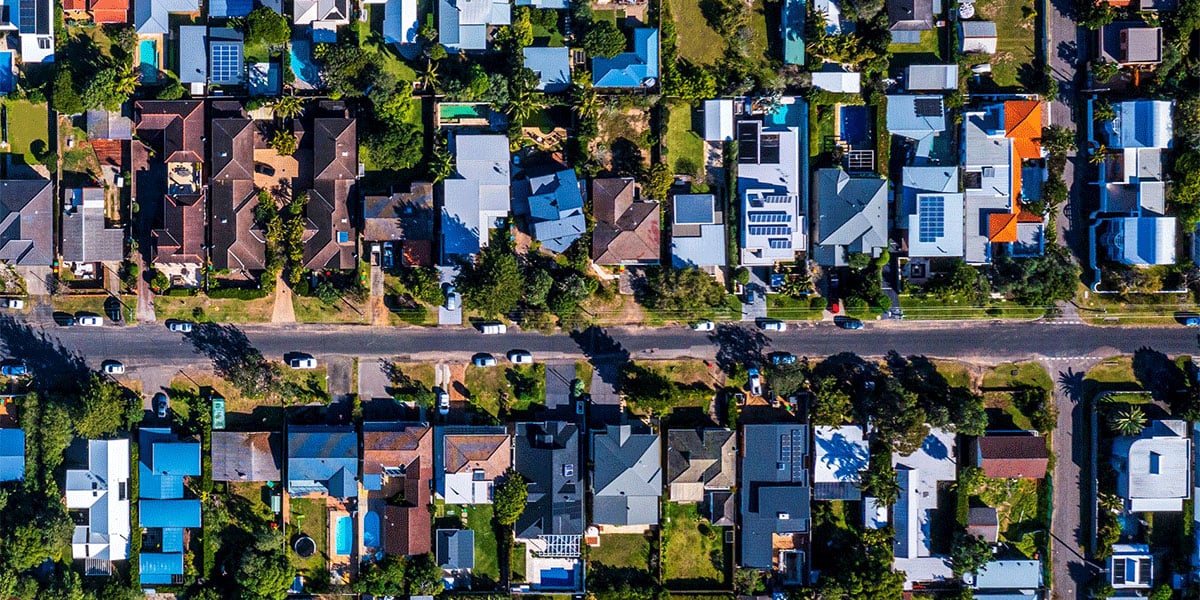Download the PDF

Is Australia's economy headed for recession?
Data this week shed light on the state of the Australian economy, which is shifting perilously close to contraction. The ABS will confirm next week whether or not Australia’s GDP grew in the March quarter. QIC forecasts are for GDP growth of just 0.1% in the quarter, slightly below economist forecasts for 0.2% growth. Whilst positive, there is clearly little margin for error between that outcome and an outright contraction. Could this be the start of a recession?
For the last two years, households have borne the brunt of cost-of-living pressures which are eating away at their disposable incomes. Inflation data for the month of April confirmed the persistence of inflation above the 3% upper bound of the RBA’s target range. Spending is weak, with real consumer spending barely changed over 2023, despite growth in the population of around 2.5%. There looks to be little to no improvement in the narrative so far this year, with real retail sales falling by 0.4% in the March quarter. Even allowing for some increase in non-retail spending, including the lumpy purchase of motor vehicles as suggested by the import data, real household spending is likely to eke out a gain of just 0.1% in the March quarter. Weakness is expected to extend into the June quarter too, with monthly retail sales values rising by just 0.1% in April, while consumer confidence remains at recessionary levels.
Construction was also weak in the March quarter, with real construction-work-done falling by 2.9% due to broad based declines across engineering and building work done. The largest fall was in non-residential building work, which contracted by 7.0% in the quarter, although residential construction also fell by 1.2% in the quarter. While private sector construction work fell, public sector construction also fell in the quarter driven by public infrastructure, despite the long pipeline of state government spending projects.
On a more positive note, there were signs of strength in capital expenditure, with non-mining capex growing by 3.3% in the quarter. Non-mining businesses have been investing in machinery and equipment in an effort to address some of the capacity constraints they face. The unwinding of global supply chain pressures means that equipment is now readily available to purchase. The ABS noted a large rise in investment in vehicles to support large infrastructure projects, and equipment and machinery capex to support expanded investment in data centres. Mining capex fell in the quarter due to reduced spending on iron ore and LNG projects. Looking further ahead, firms’ capex intentions for 2024-25 suggest continued modest growth in business investment, supported by expansion in data centres and infrastructure required for the renewable energy transition.
The external sector is likely to be a drag on GDP growth in the March quarter, with the goods trade surplus deteriorating from $29b in the December quarter to $21b in the March quarter. While a fall in the terms of trade contributed to this weakness, as commodity prices fell (including a near 20% fall in iron ore prices), we also expect a negative contribution from net trade volumes as import growth outpaced exports. The improvement in supply chains meant that imports of vehicles were particularly strong in the March quarter and are likely to have boosted consumption and investment growth, as noted above. But because these goods are imported, this doesn’t benefit GDP. Export volumes, which do benefit GDP, grew more modestly, supported by gas, iron ore and meat products.
The near standstill in the economy in the March quarter, combined with the sub-1% annualised growth in the second half of 2023, stands in direct contrast to the strong growth in Australia’s population. GDP per capita has already contracted for 4 consecutive quarters over 2023 and this is likely to persist into the second half of this year. While history has delivered larger declines in GDP per capita, it has never delivered such persistence as the 6-8 quarters we are likely to see in this business cycle.
The weakness in the economy is closing the output gap, and easing the capacity constraints that are keeping inflation above target. This is the desired outcome of tight monetary policy settings by the RBA. But the longer this situation persists, the more likely it is that the labour market will crack, leading to sharply rising unemployment and an escalated risk of recession.
The economy is perched on a precipice needing a circuit breaker to shock it out of its malaise.
Fortunately, that circuit breaker is coming in the form of fiscal stimulus. The combination of tax cuts and cost of living relief contained in the Federal Budget will arrive at an opportune time for the Australian economy. Without it, the economy would most likely slide into recession. With it, households should be able to rebuild the confidence to start spending again, and the rise in unemployment should be modest. The RBA can sit on its hands and wait to see how the economy unfolds. While we continue to expect the RBA to start cutting rates by the end of the year as inflation eases, we don’t foresee the need for rates to be cut by more than around 50bps to preserve balance in the economy between inflation and unemployment.
